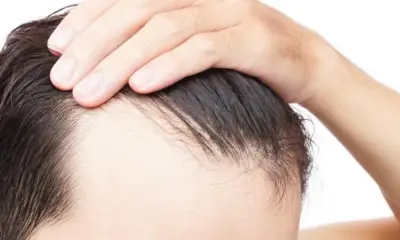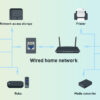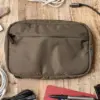Lifestyle
How to have 6 Pack Abs At Home
Learn how to get 6 pack abs at home with a proven step-by-step workout and diet plan. No gym or equipment required—just discipline and strategy.
Getting 6 pack abs at home may sound like a challenge, but it’s absolutely achievable with the right approach. I say this from personal experience. I’ve never been a gym person, but after months of trial and error at home, I managed to build visible abs by sticking to a plan that included clean eating, focused workouts, and consistent discipline.
This guide shares what actually works based on personal practice and trusted information from fitness professionals. Here’s a step-by-step guide on how to have six pack abs without stepping into a gym.
Step 1: Understand the Science Behind Abs
First, let’s clear a misconception: abs are made in the kitchen. Your abdominal muscles are already there, but they’re hidden under a layer of fat. To reveal them, you need to reduce your overall body fat—not just do crunches every day.
Based on most fitness research and my own journey, men typically need body fat around 10-12%, and women around 16-19% for abs to become visible.
That means your diet and fat loss strategy matter more than any exercise.
Step 2: Fix Your Diet
When I first started, I focused too much on workouts and ignored my diet. Nothing changed. Only after tracking what I ate did I notice results. Here’s how you should approach food:
- Create a Calorie Deficit
Consume fewer calories than you burn. Use any basic calculator online to find your maintenance calories, then reduce by 300–500 calories daily.
- Prioritize Protein
Eat high-protein foods like:
- Eggs
- Chicken breast
- Tofu
- Greek yogurt
- Lentils
Protein helps with muscle retention and keeps you full longer. I started aiming for at least 1.6g of protein per kg of body weight.
- Avoid Processed Foods
Reduce intake of:
- Sugary drinks
- Fried snacks
- White bread
- Packaged desserts
Instead, focus on whole foods—fruits, vegetables, whole grains, and lean proteins.
- Drink Plenty of Water
Aim for 2.5–3 liters of water daily. It helps reduce bloating and improves metabolism.
Tracking my food on a simple app helped keep me accountable. I also meal prepped every Sunday, which kept me from eating junk during busy days.
Step 3: Do Core-Targeted Workouts
You don’t need fancy equipment or gym access. I did all my ab workouts at home on a yoga mat. Here’s a sample beginner-friendly ab routine that targets all major core muscles:
Daily Ab Routine (15–20 Minutes)
- Plank – 3 sets of 30-60 seconds
Builds overall core strength. - Bicycle Crunches – 3 sets of 20 reps (10 each side)
Engages both upper abs and obliques. - Leg Raises – 3 sets of 15 reps
Targets lower abs, which are usually the hardest to reveal. - Russian Twists – 3 sets of 20 reps (10 each side)
Great for obliques and side definition. - Mountain Climbers – 3 sets of 30 seconds
Combines cardio and core in one move.
This workout takes less than 20 minutes and is scalable. I started with 2 sets of each exercise and slowly built up to 3–4 sets.
Step 4: Add Cardio and Full Body Workouts
Abs won’t show if your body fat stays high. That’s where cardio and full-body exercises come in. Here’s what worked for me:
- HIIT Workouts (3–4 times/week)
High-Intensity Interval Training (HIIT) burns more fat in less time. My go-to:
- 30 seconds jumping jacks
- 30 seconds rest
- 30 seconds squat jumps
- 30 seconds rest
- 30 seconds burpees
- Repeat 4 rounds
- Bodyweight Training
Include push-ups, squats, lunges, and dips. These exercises improve muscle tone and metabolism.
You can alternate between ab workouts and HIIT/cardio days to maintain consistency without overtraining your abs.
Step 5: Stay Consistent and Track Progress
This part is non-negotiable. Discipline beats motivation. I tracked my progress weekly:
- Took front and side photos every 7 days
- Measured waist circumference
- Noted body weight (but didn’t obsess over it)
You won’t see visible changes in a week or two. For me, it took about 10–12 weeks of consistent effort to notice a visible line across my midsection.
Step 6: Prioritize Recovery and Sleep
Building abs also requires rest and recovery. Without proper sleep, your body produces more cortisol (a stress hormone), which promotes fat retention around the belly.
Make sure to:
- Get at least 7–8 hours of sleep
- Avoid late-night snacking
- Stretch or do yoga once a week to improve flexibility and reduce injury risk
Once I fixed my sleep pattern, I noticed quicker recovery and better performance in workouts.
Step 7: Avoid Common Mistakes
Through personal experience and learning from fitness communities, here are mistakes to avoid:
- Doing endless crunches without fixing diet
- Skipping rest days
- Not tracking food or progress
- Drinking calories (sugary drinks, alcohol)
- Relying on ab belts or fat-burning pills
I fell into some of these traps early on. Learning from them helped me stay on track.
Step 8: Stay Patient and Realistic
Six-pack abs are a result of months of effort, not weeks. The timeline depends on your starting point. Some people may take 3 months; others may need 6–12 months. I was lean to start with, so it took me around 12 weeks of focused effort.
Avoid comparing yourself to fitness influencers. Focus on progress, not perfection.
Final Thoughts
You don’t need a gym membership or expensive gear to get 6 pack abs at home. All it takes is:
- A clean, calorie-controlled diet
- Consistent home workouts
- Patience and discipline
Stick to the basics. Don’t overcomplicate it. In my experience, the simple routines delivered the best results. Start today, stay committed, and you’ll be surprised how much your body can change in a few months.



















